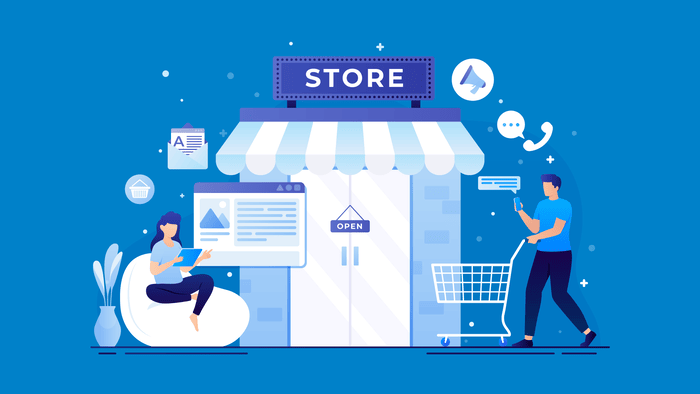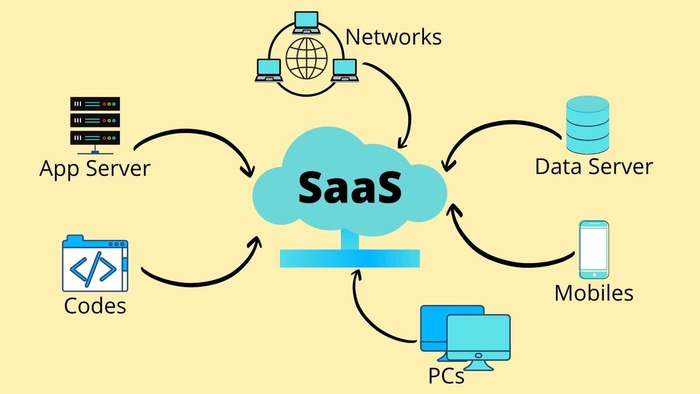As businesses embrace AI’s benefits, having AI-driven analytics in the toolset is a must for any retail SaaS product. It allows for predicting fluctuations in customer behavior, alerting stockouts, and helping adjust staffing to seasonal peaks and lows.
For retail SaaS providers, implementing AI helps meet market demand, and innovating in AI gives them a competitive edge. These same analytics can also guide smarter SaaS pricing strategies, helping providers determine optimal subscription tiers based on usage patterns, customer value, and market conditions.
In this article, we shall discuss how retail SaaS platforms can benefit from implementing AI-driven analytics, where AI brings real value, and how the integration of AI influences your roadmap.
Let’s get started!
Why Predictive Analytics Is a Game-Changer for Retail SaaS
Predictive analytics adds a new layer of effectiveness to retailers’ interactions with their data. It is used to forecast demand and hence reduce stockouts and overstocks, or get insights into customer behavior, personalize offerings, and reduce churn.
By predicting seasonal peaks, it gives recommendations on when to hire a temporary workforce to augment your teams or adjust stocks of seasonal products.
The flexibility of AI models allows them to be adapted to any use case or process. The market is more than ready to have and use all these AI features on their SaaS menu panels.
SaaS users have two choices: either build proprietary AI solutions and integrate them with their platforms, or they can address SaaS providers that have already embedded AI.
This puts retail SaaS vendors that implement AI capabilities in a winning position.
The benefits they can expect are:
- Stronger client retention: users are not likely to abandon a product that already implements leading-edge features.
- Higher perceived product value: AI-augmented SaaS is better than only SaaS. AI capabilities reduce costs, increase productivity, and access many other benefits.
- New pricing and monetization opportunities: SaaS vendors can include AI features in premium pricing plans.
Yet, there is one more thing to mention. AI implementation is a laborious and costly process. Therefore, it is recommended that we focus on the use cases where AI brings maximum value.
High-Impact Use Cases in Retail SaaS Platforms?
Here are several high-impact AI use cases on retail SaaS platforms.
- Demand Forecasting Modules: AI demand forecasting helps users plan inventory with higher precision. For example, it can allow retailers to distribute products based on their popularity across regions properly. It can also optimize delivery routes by adjusting them to traffic or weather conditions.
- Customer Lifetime Value Prediction: AI powers personalization at different levels, from smart recommendations and upselling strategies to building a shopping journey that is finely attuned to the customer’s tastes. This results in shorter and more successful shopping journeys and also helps build smarter loyalty programs that reflect customers’ real needs.
- Churn Risk Modeling: AI helps identify customers who are likely to disengage. A retailer can then take proactive action to retain a customer.
- Dynamic Pricing Engines: Conventional pricing management is a rigid process that requires extensive manual input to set up campaigns or discounts. AI allows for automated pricing based on demand, competition, and customer profiles.
- Returns & Fraud Prediction: AI algorithms can spot signs of fraudulent activity before any actual damage is done. AI fraud prediction enhances regular security practices. AI also helps automate return management, which reduces time and increases customer satisfaction.
If you decide to implement any of these use cases into your product, you must consider how to design the future upgrade.
Design Considerations for Embedding Predictive AI in SaaS Products
Your SaaS customers may have different preferences regarding using the AI updates. For example, they may want to select which predictive features they need or have insights into how AI calculates results. Generally, there are several design variants you can consider:
Multi-Tenant Architecture
The multi-tenant architecture allows every user to have a dedicated space within the system. This way, the models will work across different retailers without overfitting. Each user, or in our case, retailer, will be able to personalize features like user interface design or security settings.
Modularity
In programming, modularity means dividing software into separate modules or components. Each module handles specific features and can operate independently. If you develop your AI prediction engine as a set of modules, clients can choose which predictive features to enable. This will give your offering the flexibility retailers often crave.
Explainability
Users usually want to know how an AI model makes predictions. Transparency and explainability are essential for trust and adoption, but not all ML training methods offer equal transparency.
Real-Time vs Batch
It is also important to decide when to use the predictive features. Some businesses may need real-time inference, allowing predictions from continuous data pipelines. Others will prefer periodic updates depending on business needs.
While these considerations are essential, the role of a proper data strategy cannot be overestimated.
Data Strategy: The Backbone of Predictive Power
Predictive AI trains on information about business processes from numerous documents, such as sales reports and shipping receipts. The quality of this data is further reflected in the ability of AI software to make clear predictions.
Once implemented in your SaaS system, AI will learn from your clients’ data. With SaaS software, we are lucky: your tools are the data pipelines, and you have the chance to optimize them to make data flows fluent. You can also broaden data sources, for example, by adding reports useful for AI prediction.
Yet clients have different data maturity levels. They often store information in disconnected or partially connected systems. They may be united with tools but then need APIs, and connectors for CRM, POS, etc.
If clear and structured data is lacking, developers use synthetic data: simulators that mirror real-life scenarios to train AI models. Then, this pre-trained model is fine-tuned using the client’s new data.
Implementation Challenges and How to Overcome Them
AI prediction implementations come with challenges. The most frequent ones are:
Dealing with fragmented or inconsistent client data
Data fragmentation is a common issue with many companies. Departments use different data format standards, inconsistent naming, or various storage locations for the same data.
To implement AI prediction effectively, they must set clear data strategies and do their homework: run data audits, create a clear data architecture, and use cloud tools to unite data flows from different departments. As a possible way out, a SaaS team can augment its features by adding data architecture tools so clients can migrate there.
Balancing model performance and generalizability
Sometimes, a model fits well for one customer and underperforms with another. Your task is to create accurate and adaptable models that meet the needs of various clients. These models should include variations in client behavior, product catalog, geography, etc.
The SaaS development team has to engineer features that extract universal signals, use client-specific fine-tuning, and provide ongoing monitoring to identify and correct performance drops.
Ensuring scalability and performance at high-traffic loads
To ensure the model’s scalability and performance, it is necessary to use a flexible infrastructure, allowing it to scale up and down as the traffic load changes.
Compliance and privacy
While security and privacy regulations are widening, it is important to build a model that is compliant with current and future regulations: it is necessary to predict a single user’s right to delete their data from the system on request, opt out of data collection processes, etc.
To ensure that you predict all of the AI implementation challenges and proactively act to solve them at the planning stage, involve AI consulting. This way, you get help planning, implementing, and troubleshooting issues on your model development track.
The Road Ahead: What’s Next for AI in Retail SaaS
This feature will mature as AI predictions in retail SaaS hit the mainstream. At present, we see several trends that are gaining rapid traction:
Predictive + Prescriptive
While predictive AI offers decision-makers trends to interpret, prescriptive AI can draft recommendations and alerts based on those trends. The merger of the two technologies makes AI tools more user-friendly for SaaS clients, giving them more tools to future-proof their actions.
Embedded AI
As many SaaS providers have already included AI features in their offerings, we predict that the embedded AI will become a selling point in SaaS marketing and sales cycles.
AI Agents
Agentic AI is the next big step in the evolution of AI. Logic dictates that AI agents will be equipped with numerous tasks, including AI predictions. They will also make working with AI predictions even more fluent.
Conclusion
Retail SaaS platforms that embed predictive AI gain a strategic edge. AI-powered features make their products more valuable in the eyes of consumers and also future-ready and prepared for upcoming challenges.
Therefore, it is the best time to invest in scalable, explainable, and client-friendly AI features that meet evolving retail demands.


